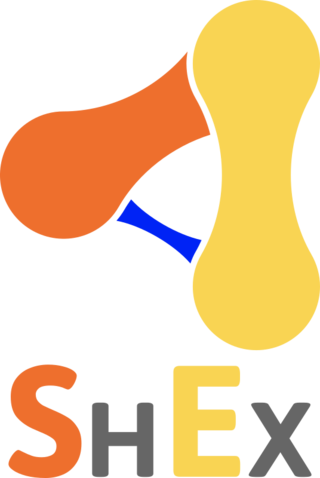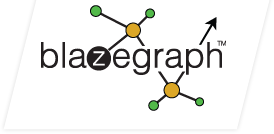SPARQL Syntax Expressions (alternatively, SPARQL S-Expressions) is a parse tree (a.k.a. concrete syntax) for representing SPARQL Algebra expressions.
SPARQL Syntax Expressions (alternatively, SPARQL S-Expressions) is a parse tree (a.k.a. concrete syntax) for representing SPARQL Algebra expressions.
They have been used to apply the BERT language model to create SPARQL queries from natural language questions. [1]

A regular expression is a sequence of characters that specifies a match pattern in text. Usually such patterns are used by string-searching algorithms for "find" or "find and replace" operations on strings, or for input validation. Regular expression techniques are developed in theoretical computer science and formal language theory.
The Resource Description Framework (RDF) is a World Wide Web Consortium (W3C) standard originally designed as a data model for metadata. It has come to be used as a general method for description and exchange of graph data. RDF provides a variety of syntax notations and data serialization formats, with Turtle currently being the most widely used notation.
The question mark? is a punctuation mark that indicates an interrogative clause or phrase in many languages.
The SQL SELECT statement returns a result set of records, from one or more tables.
Z39.50 is an international standard client–server, application layer communications protocol for searching and retrieving information from a database over a TCP/IP computer network, developed and maintained by the Library of Congress. It is covered by ANSI/NISO standard Z39.50, and ISO standard 23950.
RDF Schema (Resource Description Framework Schema, variously abbreviated as RDFS, RDF(S), RDF-S, or RDF/S) is a set of classes with certain properties using the RDF extensible knowledge representation data model, providing basic elements for the description of ontologies. It uses various forms of RDF vocabularies, intended to structure RDF resources. RDF and RDFS can be saved in a triplestore, then one can extract some knowledge from them using a query language, like SPARQL.
Multi-adjoint logic programming defines syntax and semantics of a logic programming program in such a way that the underlying maths justifying the results are a residuated lattice and/or MV-algebra.
SPARQL is an RDF query language—that is, a semantic query language for databases—able to retrieve and manipulate data stored in Resource Description Framework (RDF) format. It was made a standard by the RDF Data Access Working Group (DAWG) of the World Wide Web Consortium, and is recognized as one of the key technologies of the semantic web. On 15 January 2008, SPARQL 1.0 was acknowledged by W3C as an official recommendation, and SPARQL 1.1 in March, 2013.
Oracle Spatial and Graph, formerly Oracle Spatial, is a free option component of the Oracle Database. The spatial features in Oracle Spatial and Graph aid users in managing geographic and location-data in a native type within an Oracle database, potentially supporting a wide range of applications — from automated mapping, facilities management, and geographic information systems (AM/FM/GIS), to wireless location services and location-enabled e-business. The graph features in Oracle Spatial and Graph include Oracle Network Data Model (NDM) graphs used in traditional network applications in major transportation, telcos, utilities and energy organizations and RDF semantic graphs used in social networks and social interactions and in linking disparate data sets to address requirements from the research, health sciences, finance, media and intelligence communities.
In computing, Terse RDF Triple Language (Turtle) is a syntax and file format for expressing data in the Resource Description Framework (RDF) data model. Turtle syntax is similar to that of SPARQL, an RDF query language. It is a common data format for storing RDF data, along with N-Triples, JSON-LD and RDF/XML.
An RDF query language is a computer language, specifically a query language for databases, able to retrieve and manipulate data stored in Resource Description Framework (RDF) format.
A triplestore or RDF store is a purpose-built database for the storage and retrieval of triples through semantic queries. A triple is a data entity composed of subject–predicate–object, like "Bob is 35" or "Bob knows Fred".

Named graphs are a key concept of Semantic Web architecture in which a set of Resource Description Framework statements are identified using a URI, allowing descriptions to be made of that set of statements such as context, provenance information or other such metadata.
GeoSPARQL is a standard for representation and querying of geospatial linked data for the Semantic Web from the Open Geospatial Consortium (OGC). The definition of a small ontology based on well-understood OGC standards is intended to provide a standardized exchange basis for geospatial RDF data which can support both qualitative and quantitative spatial reasoning and querying with the SPARQL database query language.
Semantic queries allow for queries and analytics of associative and contextual nature. Semantic queries enable the retrieval of both explicitly and implicitly derived information based on syntactic, semantic and structural information contained in data. They are designed to deliver precise results or to answer more fuzzy and wide open questions through pattern matching and digital reasoning.
Schema-agnostic databases or vocabulary-independent databases aim at supporting users to be abstracted from the representation of the data, supporting the automatic semantic matching between queries and databases. Schema-agnosticism is the property of a database of mapping a query issued with the user terminology and structure, automatically mapping it to the dataset vocabulary.
Shapes Constraint Language (SHACL) is a World Wide Web Consortium (W3C) standard language for describing Resource Description Framework (RDF) graphs. SHACL has been designed to enhance the semantic and technical interoperability layers of ontologies expressed as RDF graphs.

Shape Expressions (ShEx) is a data modelling language for validating and describing a Resource Description Framework (RDF).
NitrosBase is a Russian high-performance multi-model database system. The database system supports relational, graph and document database models.

Blazegraph is an open source triplestore and graph database, developed by Systap, which is used in the Wikidata SPARQL endpoint and by other large customers. It is licensed under the GNU GPL.
{{cite journal}}: Cite journal requires |journal= (help)